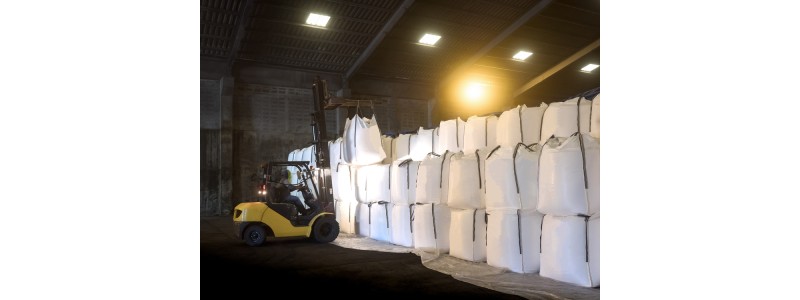
The growth of bulk bag usage as a packaging form has increased significantly over the past two decades with over 100 million now produced each year across the world.
The benefits of bulk bags have also led to their growing use for the distribution of materials that were previously only handed in 50 pound small bags. These benefits include cost savings, worker safety and warehousing efficiency.
The migration to bulk bags goes across numerous industries including food, chemical, plastics and pharmaceutical production. Each of these industries has specific requirements in terms of hygiene, equipment size and options needed. Bulk container handling equipment manufacturers need to meet the challenges that may include achieving dust-free operation, varying material contact surfaces and size/footprint limitations.
For this blog, we will focus on the equipment requirements for woven polypropylene sacks.
Equipment Requirements for Bulk Containers
When selecting an ingredients handling system, the main concern for the food industry is the need to meet stringent sanitary standards. Industry hygiene standards need to be addressed and used in the specification of equipment.
Other concerns or requirements include precise methods of product dosing and health-related questions of reducing dust emissions and heavy lifting.
A staple in the food industry is clean in place technology, which helps to avoid spillage and waste. Safe, clean and efficient handling methods are therefore needed for bulk bag usage to be viable.
What are the Common Options for Bulk Bag Discharging
Height Restrictions and Hoists - A low-loading version is available to be used in height-restricted areas or where only a low lift fork truck is available. Where fork trucks are not used, equipment manufacturers may supply a discharger with an integral hoist designed to lift bulk containers into place. Also, a low-level hoist can be provided.
Batching from Bulk Bags - A loss-in-weight discharger may be used where automatic batch emptying of bulk bags is needed. This comprises of a bag support dish mounted on load cells and is attached to a batch controller, which allows for both 'bulk' and 'trickle' feed.
A pause and resume feature will then retain in memory the amount dispensed when one bag is empty, When a new bag is placed in position, the controller recalls the remaining weight needed and resumes discharging.
Batch recipe operations will often call for partly filled bags to be re-tied and removed from the discharger. This is facilitated by circular 'yoke' closure bars. Centralised computer inventory control is also possible as the amount of material remaining in a bulk container can be quickly be seen on the discharger's control panel.
Get in Touch For More Information
If you would like more information about Centurion Packaging’s woven polypropylene sacks and discuss discharge options, please do not hesitate to contact us today.

 5% OFF YOUR FIRST ORDER OVER £50! JUST USE COUPON “MY1STORDER” AT THE CHECKOUT FREE NEXT DAY DELIVERY FOR MOST UK MAINLAND ORDERS, PLEASE SEE T&C'S
5% OFF YOUR FIRST ORDER OVER £50! JUST USE COUPON “MY1STORDER” AT THE CHECKOUT FREE NEXT DAY DELIVERY FOR MOST UK MAINLAND ORDERS, PLEASE SEE T&C'S
.jpg)